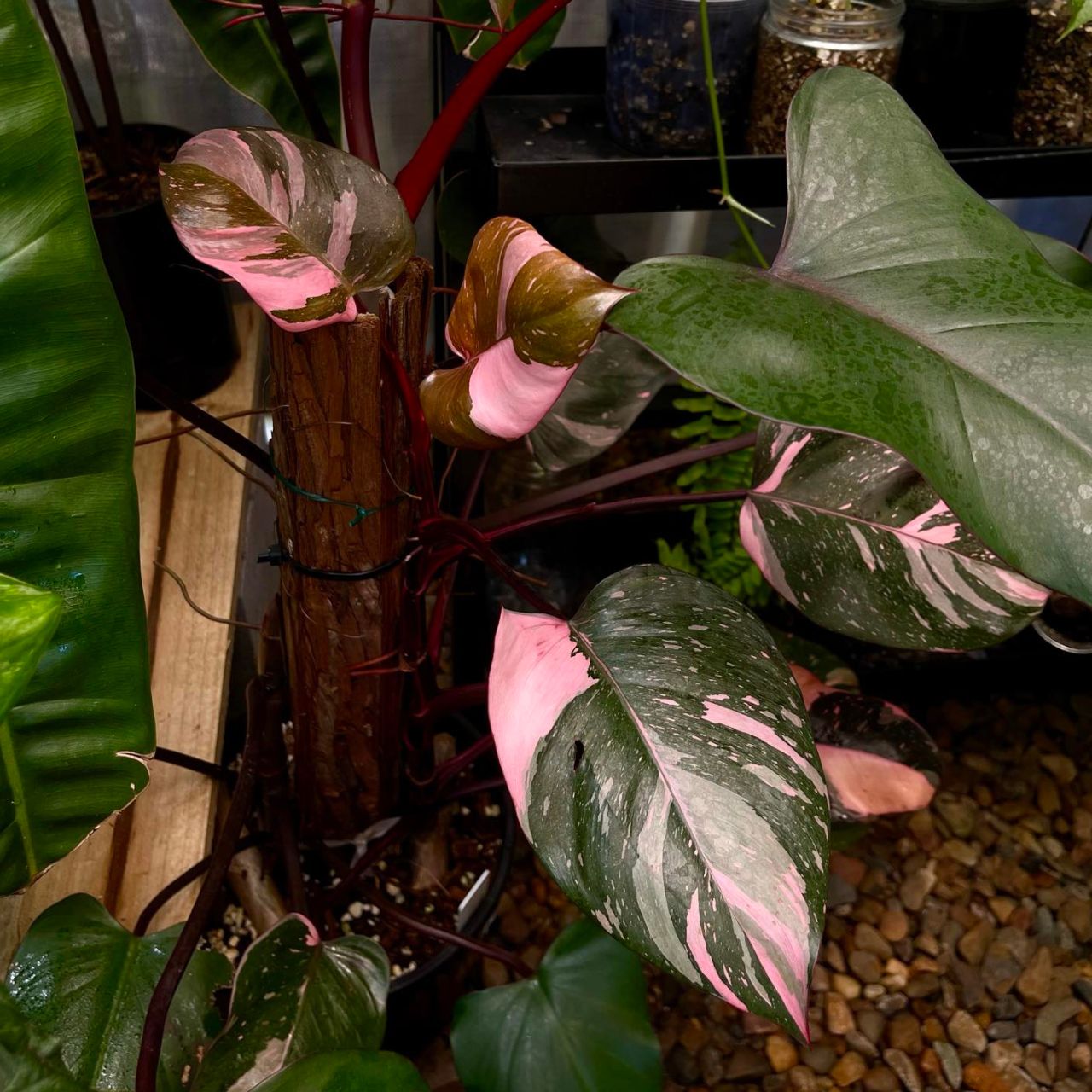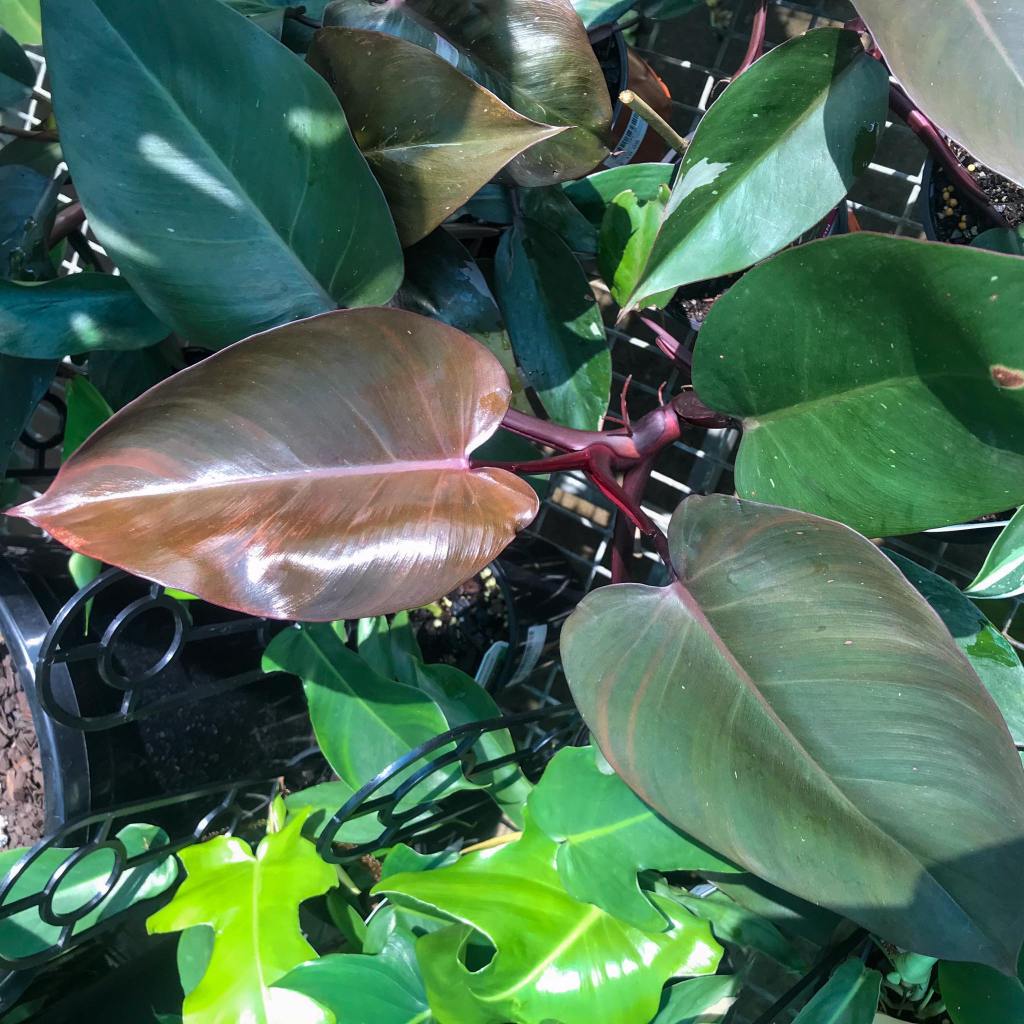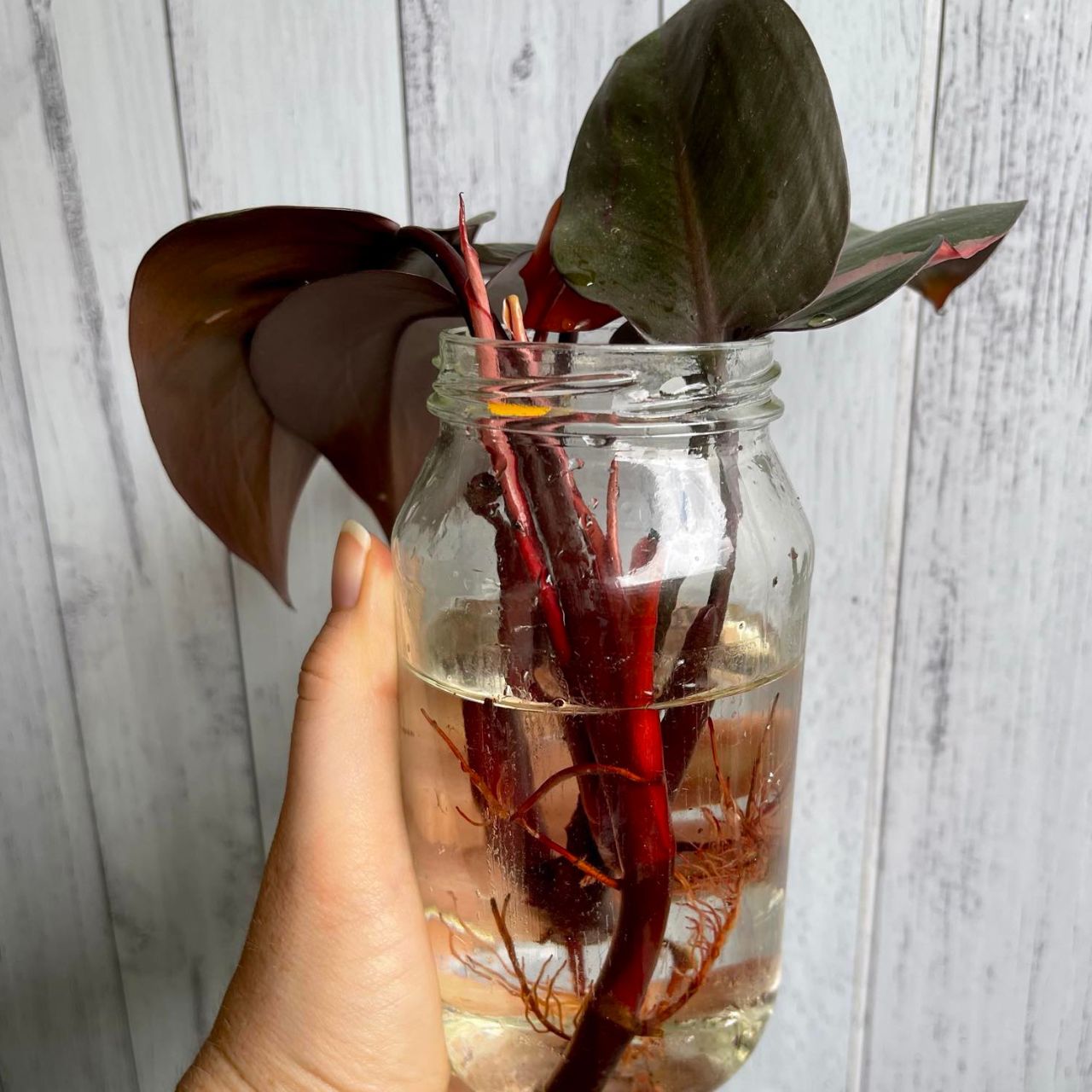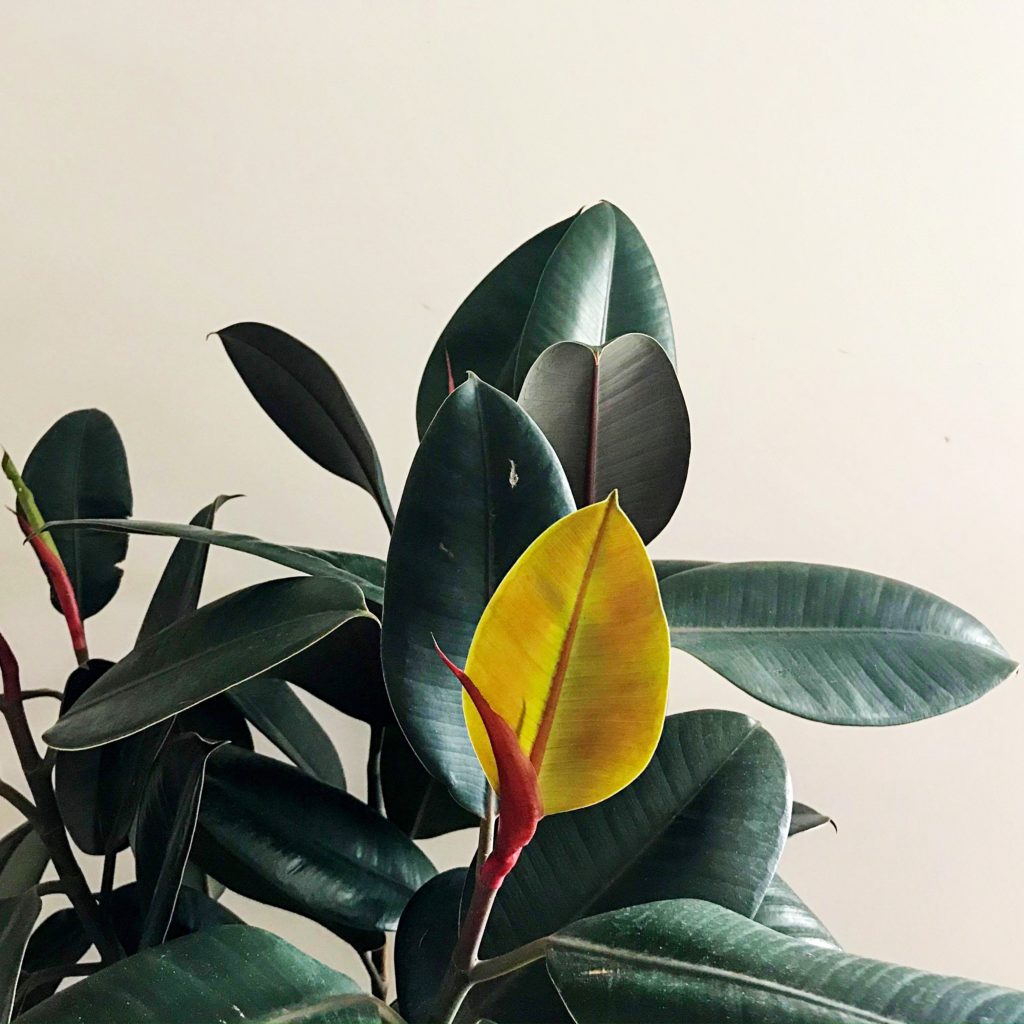Philodendron Erubescens ‘Pink Princess’ aka Philodendron Pink Princess

Pink Princess Philodendron are a variegated Philodendron variety that boast amazing coloration. With beautiful pinks contrasting deep green/ black leaves, what isn’t there to love?
Pink Princess are part of the Araceae family and originates from the lush rainforests of Columbia. This popular house plant is easy to care for making it perfect for beginner house plant owners.
Pink Princess Care Overview
| Care Aspect | Details |
|---|---|
| Full Size | 2-4 feet |
| Light | Bright indirect light |
| Temperature | 65-80°F (18-27˚C) |
| Humidity | Above 50% |
| Cost | $$ |
| Care Level | Easy |
| Toxicity | Toxic |
Size
You can expect your Philodendron Pink Princess to grow up to 2-4 feet in height and width. With the leaves reaching up to 8 inches in length.

This plant is a vining plant, which means it grows aerial roots and attaches to surfaces. Providing your Pink Princess with a moss pole or stake for it to climb up will help give it support and encourage larger leaves.
Light Requirements
Pink Princess Philodendron will grow best when in bright indirect light. Giving your plant at least 6 hours of bright indirect light per day will help to encourage better variegation and growth.
The pink variegation on the leaves can’t absorb light which means the plant needs to work harder to photosynthesize so low light conditions aren’t recommended.
Pink Princess Philodendron can tolerate some direct sunlight but you need to be cautious that it doesn’t burn the foliage. Morning sunlight is best as the suns rays aren’t as harsh.
A sign your Pink Princess Philodendron is not getting enough light is if the plant is becoming long and leggy in stature and slow growth.
A sign of too much light is faded foliage and more than one leaf yellowing at a time and dropping off. This can be resolved by changing the position of your plant to somewhere that better suits its light requirements.
Temperature
The ideal temperature for growing Philodendron Pink Princess is between 65 to 80°F (18 to 27˚C) during the day and around 60°F (15˚C) during the night.
This plant prefers warm climates and won’t really tolerate cold conditions. If the temperature drops below 40ºF (4ºC), you should move your plant to a warmer spot to avoid any harm to your Philodendron.
Being kept outside of this temperate range for prolonged periods of time can lead to poor plant health and possibly plant death.
During the cooler months, you should move your plant to a warmer spot in your home or consider using a greenhouse.
Humidity
Philodendron Pink Princess will thrive when kept in a humidity level above 50%. If your plant is in a spot with low humidity, you may notice brown edges on the leaves.
Providing a higher humidity for your plants will encourage bigger and healthier growth. There are a few thing you can do that can help bump up the humidity in your home. The things you can try are:
- Misting your plants
- Pebble trays
- Grouping plants together
- Humidifier
You can read more about increasing humidity with our tips for increasing humidity for indoor plants or consider the use of a greenhouse.
Watering Requirements
Philodendron Pink Princess like to be moderately watered. How often you’ll need to water will change throughout the seasons when the amount of sunlight and temperature is changing.
Before watering, you should check the top 1-2 inches of soil to feel if it is dry.
If the soil is dry, you should water your plant. You should ensure that all the water has drained and that the plant isn’t sitting in any water.
When it comes to watering your Philodendron Pink Princess, you need to be cautious of over-watering. Excess water causes the soil to become waterlogged and can start rotting the roots which doesn’t allow them to take in any water or nutrients.
This can then cause fungus issues, pest problems and root-rot. A sign that you may have over-watered your Pink Princess Philodendron is yellowing and drooping leaves.
However, drooping leaves can also be a sign that your plant is thirsty.
Fertilizing Requirements
You should fertilise your Philodendron Pink Princess monthly during Spring and Summer. You can cut back fertilising during the cooler months (Winter and Autumn) when the plant isn’t actively growing.
Applying fertilizer while your plants aren’t using all the nutrients in the soil can cause salt build up and root burn.
The best fertiliser to use for Pink Princess Philodendron would be a balanced all purpose fertiliser diluted to half strength. Slow release fertilisers are a great alternative to liquid fertilisers.
A sign that your Philodendron Pink Princess might be lacking nutrients is slow growth and small leaves.
Another thing you need to look out for when fertilizing your house plants is over-fertilizing. Over-fertilizing your Philodendron Pink Princess can burn the roots and foliage.
If you think you’ve over-fertilized your plant you can either change the soil or rinse the fertilizer out of the soil. You will notice a change in the water colour once the fertilizer has been rinsed out.
Soil Requirements
Philodendron Pink Princess like to be in a well draining soil that is rich in organic matter. An Aroid Mix is ideal, this is a mix of orchid bark, potting mix, perlite and peat moss mixed together to help create drainage and aeration.
Air flow is important in potting soil as it allows the plants roots to breath. Not having enough oxygen to the roots can eventually cause them to start rotting.
Adding other organic materials such as coco coir, mulch chunks and coconut husk to the soil will help to restrain moisture.
Philodendron Pink Princess like to be kept in a slightly moist soil so it’s important to use ingredients that will hold onto moisture but not keep the soil soggy.
Repotting
You should repot your Pink Princess every 1-2 years or when the plant becomes root-bound (roots growing out of the drainage holes).
Make sure to do this during Spring or summer as this is the best time to repot since the plant is actively growing.
You should use an Aroid Mix for the potting medium as well as a clear plastic pot with drainage holes to aid in monitoring root health.
Propagating Pink Princess

Propagating your Philodendron Pink Princess to grow additional plants is easy. It can be done simply by taking a node cutting from the mother plant and growing in a medium such as soil or water.
Make sure to allow node cuttings to harden/ dry out for at least a few hours prior to putting them in water as this helps prevent rotting.
Diseases & Pests
The common pests that you can encounter on your Philodendron Pink Princess are aphids, spider mites, scale, thrips, fungus gnats and mealybugs. The common disease you may encounter is root-rot.
The best thing you can do when it comes to pests on houseplants is to try and avoid any pest infestations from starting. There are a few things you can do that will assist in preventing any pest infestations and these things are:
- Checking new plants for pests or isolating new plants for up to a week.
- Check your plants every few days for pests.
- Trim off any dead or dying leaves.
- Wipe down leaves if you notice them getting dusty.
- Keeping your plants healthy. A healthy plant will be able to handle an infestation better than those that aren’t as happy.
- Isolate any plants that have pests.
Following this will assist in keeping pests away as well as catch them early on before any severe infestations are able to start.
Toxicity
Pink Princess Philodendron are considered to be toxic if ingested. All Philodendron plants contain Calcium Oxalate Crystals which are toxic to both humans and pets. Symptoms include a burning sensation and swelling of the lips, mouth, throat and tongue.



